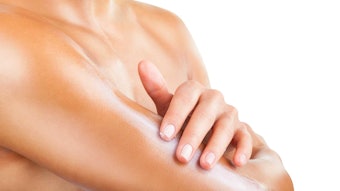As a hair scientist, this author is hugely grateful that his test substrate is both readily available and biologically stable. Every paper or presentation by skin care colleagues who must procure and store porcine dermis and epidermis, or colleagues who carry out even more unpleasant practices for in vitro fingernail testing, serves as a reminder of this. Thankfully, hair grows at an average rate of around 0.5 inches per month and egresses onto the scalp in a biologically inert state. Therefore, samples can be harvested from willing donors and kept indefinitely without any special storage considerations. Acquiring 100–200 fibers from an individual can generally be performed without noticeable consequences, and such small samples can be utilized effectively in various single fiber testing protocols.
However, most hair-related attributes are associated with bulk array properties as opposed to individual fibers; accordingly, testing is most often carried out on assemblages of varying shapes and sizes termed tresses, swatches or switches (see Figure 1). Clearly there is a need to procure larger hair volumes, and the considerable demand from product development companies, raw material suppliers and testing laboratories has created a marketplace for companies that provide such services.
Yet, hair is a distinctly variable material, and the nature of this substrate can have a major impact on laboratory test results. This article, therefore, discusses hair as a laboratory substrate to provide guidance on minimizing variability and creating optimal test conditions.
A Remarkable Bio-composite
A material scientist would consider hair a bio-composite, wherein its considerable strength and flexibility are the result of a complex hierarchical structure. At the simplest level, hair’s strength relates to its internal structure, or cortex, which is protected by a tough and resistant outer layer, the cuticle. However, wear and tear associated with everyday habits, practices and treatments takes a gradual toll on this structure and leads to the progressive degradation of fiber properties. Accordingly, disruption of the cortex can lead to a reduction in tensile properties, which may promote increased fiber breakage.1, 2 And a rougher, more irregular cuticle surface will negatively impact hair feel and hinder manageability by causing increased friction and tangling, which in turn will diminish hair’s ability to reflect light and reduce shine. Therefore, when performing laboratory testing on hair, it is imperative to have some knowledge of its history, as the properties of healthy and damaged hair can be distinctly different.
In order to generate large, uniform batches of hair from which tresses can be produced, it is necessary to procure and blend hair from multiple donors (see Figure 2). However, it is important that these blends are made from hair with similar properties, i.e., ethnicity, color, quality, thickness, shape, etc. It is this procurement and blending service that is performed by the hair supplier companies. Consequently, the hair scientist has access to tresses of different shapes and sizes that can be made from quite specific types of hair.
A Word on Statistics
While a range of specific hair types is available, as noted, hair is a variable substrate, so it is always necessary to run sufficient replicate samples to provide statistical confidence in the results. Figure 3 shows the results from an instrumental wet combing experiment3 assessing the lubrication delivered from a series of prototype conditioner formulations. These results are expressed in terms of box and whisker plots, whereby the central small box represents the mean, the whiskers represent the standard deviation (SD) and the larger box represents the standard error (SE). The standard error is calculated as: SE = SD/√N, where N is the number of replicate samples. Therefore, even in the presence of a high standard deviation, a low standard error can be attained by running a suitably high number of replicate samples.
In this particular study, eight replicate tresses were used for each sample, which can be seen to yield boxes of reasonable width; i.e., acceptable standard error. The presence of overly thick boxes would indicate a high standard error and the need for a higher number of replicates. Conversely, very narrow boxes suggest the possibility of reducing the number of replicates. Figure 4 shows results for single hair fiber tensile testing1 as a function the relative humidity. In this instance, results for 50 individual fibers were needed at each condition to provide an appropriate standard error. In short, this approach of visualizing data provides a useful means to determine an appropriate number of replicate samples for a given test.
The Influence of Water
In addition to illustrating the variability in single fiber experiments, Figure 4 demonstrates the considerable effect of water on the properties of hair. Simply handling wet vs. dry hair is enough to feel differences in the tensile properties and surface roughness of the individual fibers. Technically, this occurs because water penetrates into fibers and solvates hydrogen bonds and salt bridges that provide secondary structure to the hair proteins. Without these bonds, hair has less strength and undergoes a degree of swelling.
Accordingly, it is often pertinent to test the properties of hair in both the wet and dry states. For example, a previous article3 discussed instrumental combing experiments performed under both of these conditions to illustrate the benefits of conditioning products. While the underlying measurement process is the same, the variable properties of both the hair and product dictate the differing results that may be obtained in wet and dry states. In a similar vein, past experience with single fiber tensile testing measurements has shown how the damaging effect of various chemical treatments (e.g., coloring, bleaching, relaxing and perming) is always more pronounced when these experiments are performed in the wet state.
Another previous article4 discussed how the water content of hair is overwhelming dictated by the relative humidity of the surrounding environment. This explains the results shown in Figure 4 and demonstrates another potential source of considerable method variability—namely, varying climatic conditions in the laboratory can affect test results and, accordingly, it is necessary to control these variables. Any dry state testing should be performed with equipment and test samples housed in either a benchtop humidity chamber or a walk-in climate controlled room.
Selecting Hair Types to Optimize Method Sensitivity
The major underlying technical benefit associated with hair conditioning products is surface lubrication. However, attempts at quantifying this benefit may be hindered if testing is performed on a surface that is already relatively smooth. Instead, the effects of such treatments and, potentially, the ability to distinguish between similar products may be enhanced by using a less pristine substrate. By means of illustration, the wet combing results shown in Figure 3 were obtained using mildly bleached hair, but the sensitivity of many methods can be improved by using damaged hair. Using this optimal substrate can be reasonably justified due to the high percentage of women who regularly apply at least one chemical to their hair. In fact, it can be argued that damaged hair is more representative of the general population than the hair in a “virgin” state generally obtained from supplier companies.
Nonetheless, care is needed to establish a protocol to chemically damage hair samples reproducibly. Whenever possible, in-house skeletal formulas should be used since many commercial chemical treatments contain substantive conditioning ingredients that are not easily removed and may interfere with later testing. If using commercial treatments, their ingredient labels should be carefully inspected.
In either case, these chemical treatments are rather exothermic, and can generate significant heat during reaction. Higher solution temperatures will generate faster reaction rates, and accordingly, it is important to control and maintain this parameter throughout treatment. Further, differing hair types possess different susceptibility or resistance to such chemical treatments. The reason for this is still a mystery to scientists, although it is well-recognized. Therefore, it is still entirely possible for identical handling conditions to yield differing results due to different lots of hair.
Reusing Hair Tresses
One commonly heard question is whether it is acceptable to reuse hair tresses—while hair is readily available, the price can quickly add up to a significant cost for busy research and testing laboratories. It may seem fiscally responsible to use tresses until they fall apart; however, as outlined herein, everything done to hair has the potential to change its properties, and the integrity of the fibers within the tresses will progressively decline with subsequent treatment and manipulation. In addition, it is never possible to be certain that deposits from previous treatments have been completely removed from the hair before beginning the next experiment. Therefore, reusing tresses comes at the expense of losing some confidence in the quality of the results. A sensible stance likely involves some middle ground, wherein tresses may be reused when it is felt that their past history is unlikely to influence new testing.
Hair Ethnicity
It is always prudent to perform testing on the hair type that best replicates that of the target customer—and thankfully, as described, hair supplier companies can provide tresses to quite rigorous specifications. As such, it is possible to procure hair tresses of different colors with different thicknesses, degrees of curl and ethnic backgrounds. Traditionally, the three largest hair care markets have been the United States, Europe and Japan, so demand has been the greatest for Caucasian and Asian hair. However, the emergence of important new markets is leading to increased demand for Hispanic and Indian hair.
One remaining area of difficulty involves African hair. Firstly, a very high number of African women in certain markets relax their hair,5 so the potential to procure non-chemically treated hair is already restricted to a limited population. Secondly, this hair type is generally not grown to the same length as Caucasian hair. Thirdly, the highly kinky conformation hinders the blending process; it is usually possible to obtain small bundles of African hair that can be used for single fiber testing but it is virtually impossible to obtain enough for tress testing. On occasion, one may encounter significant volumes of “fake African” that is actually Asian hair that has been boiled on wooden skewers to create tight curls. However, a better testing option may involve the procurement of mixed race or Mulatto hair, which tends to have smooth, tight curls as opposed to the random kinky nature of true African hair.
Summary
The hair scientist is indeed fortunate that his/her test substrate is so readily available in such specific forms, but the variability of this material again must be emphasized. Even when hair is procured from the same head, there can be large differences between one fiber and the next. Additionally, properties will often change down the length of a single fiber due to increased damage nearer the tip. As a consequence, in vitro hair testing must always involve the use of a sufficient number of replicate samples to provide appropriate statistical confidence.
Note that this variable nature can also be used to provide optimal conditions for certain laboratory tests. Chemically damaged hair improves the sensitivity of many methodologies, including instrumental combing,3 anti-breakage2 and shine. Low humidity conditions are used to help demonstrate the ability for conditioning treatments to limit static electricity flyaway, while high humidity is often used to test styling and anti-frizz products. Meanwhile, wet state testing is more sensitive than the dry state equivalent in detecting tensile damage.
In performing all of these technical assessments, the focus is always on the test products and prototypes—whether to direct formulation efforts or substantiate marketing claims. But every now and again, hopefully one can step back to admire the truly amazingly complex structure of the hair on our heads.
References
- TA Evans, Measuring hair strength—Part 1. Stress-strain curves, Cosm & Toil 128(8) 590–594 (Aug 2014)
- TA Evans, Measuring hair strength—Part 2. Fiber breakage, Cosm & Toil 128(12) 854–859 (Dec 2013)
- TA Evans, Evaluating hair conditioning with instrumental combing, Cosm & Toil 126(8) 558–563 (Aug 2011)
- TA Evans, Measuring the water content of hair, Cosm & Toil 129(2) 64-69 (Mar 2014)
- H Bryant, C Porter, S Diridollou and G Yang, Hair problems, physical characteristics and grooming practices based on ethnicity, J Cosmet Sci 59 182-183 (2008)











